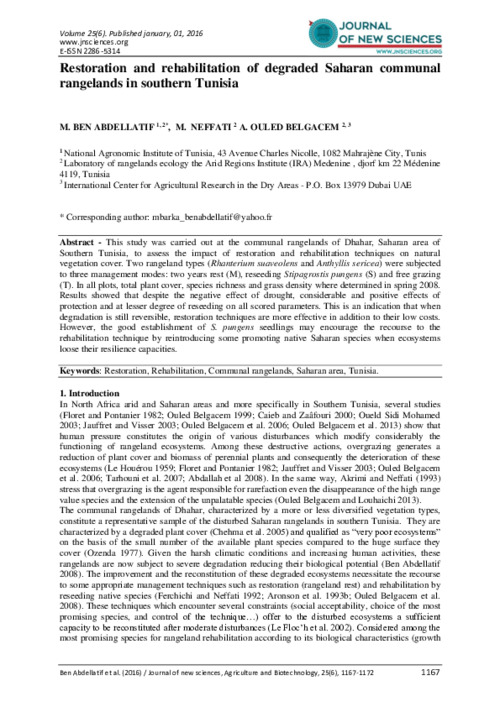Restoration and rehabilitation of degraded Saharan communal rangelands in southern Tunisia
Abstract
This study was carried out at the communal rangelands of Dhahar, Saharan area of Southern Tunisia, to assess the impact of restoration and rehabilitation techniques on natural vegetation cover. Two rangeland types (Rhanterium suaveolens and Anthyllis sericea) were subjected to three management modes: two years rest (M), reseeding Stipagrostis pungens (S) and free grazing (T). In all plots, total plant cover, species richness and grass density where determined in spring 2008. Results showed that despite the negative effect of drought, considerable and positive effects of protection and at lesser degree of reseeding on all scored parameters. This is an indication that when degradation is still reversible, restoration techniques are more effective in addition to their low costs. However, the good establishment of S. pungens seedlings may encourage the recourse to the rehabilitation technique by reintroducing some promoting native Saharan species when ecosystems loose their resilience capacities

